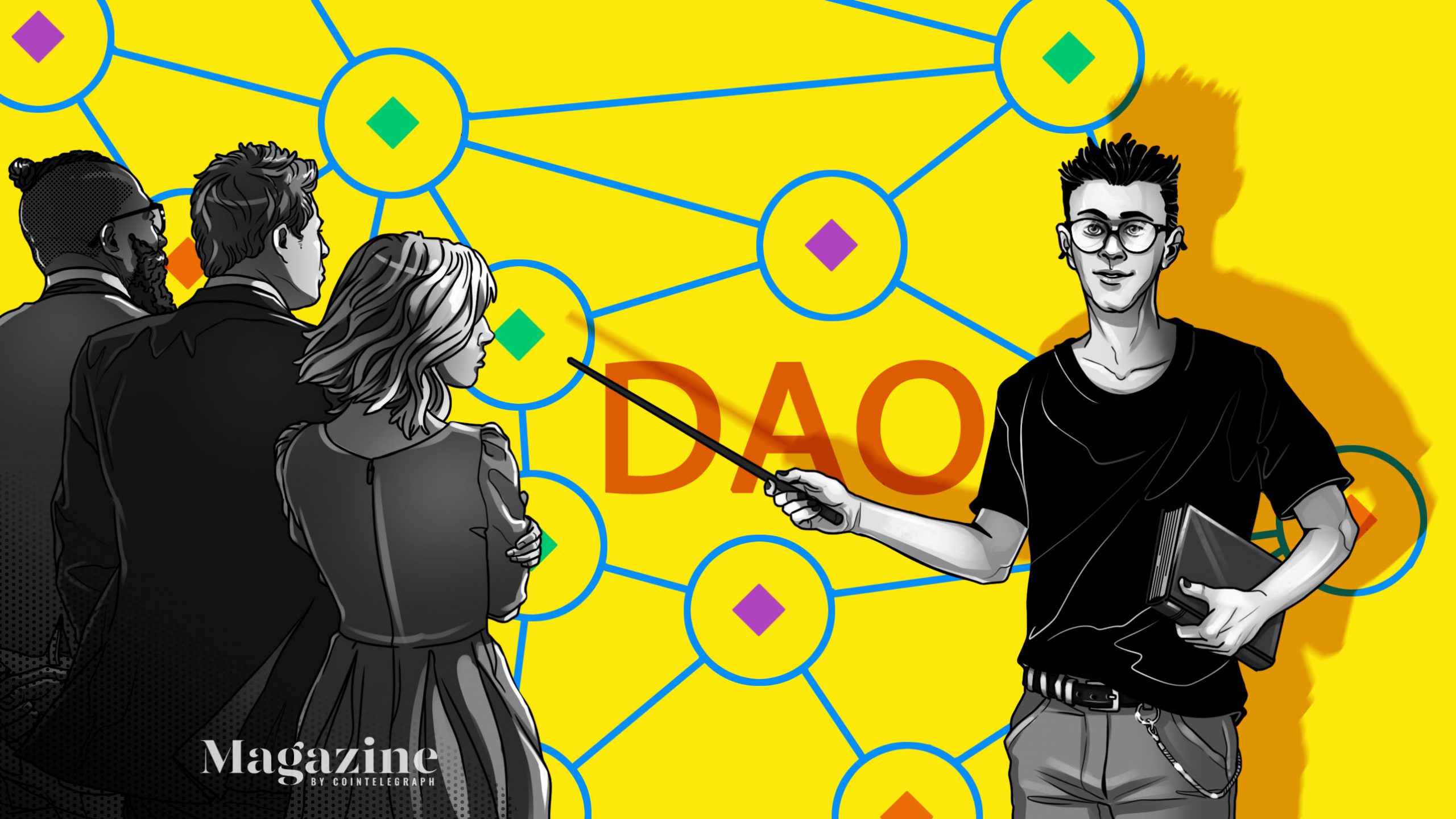DAO: Decentralized. Autonomous. Organization.“The whole phrase is a misnomer. They’re not decentralized, not autonomous and they are not organizations
DAO: Decentralized. Autonomous. Organization.
“The whole phrase is a misnomer. They’re not decentralized, not autonomous and they are not organizations,” Monsterplay blockchain consultancy founder David Freuden tells Magazine.
Freuden co-authored a 51-page report on DAOs in May 2020 in an attempt to help realize their potential. “We need DAOs,” he explains. “The idea of ‘shareholder first’ is only a 1980s/1990s concept. Companies became about profits, not products.”
He foresaw big things for DAOs and much has changed nearly two years later. By the end of 2021, DAOs had more than 1.6 million participants, up from just 13,000 at the start of the previous year. In 2021, the US state of Wyoming legislated for legal recognition of DAOs and the Marshall Islands. In 2022, Australia is considering doing the same.
Yeah, but what is a DAO?
In short, a DAO is a governance model popularized in the decentralized finance sector where members buy (or are rewarded with) governance tokens to vote on how the DAO operates and spends its money. “DAOs were born from DeFi as an investment vehicle. So, you can’t separate a DAO from tokenomics,” says Freuden.
DAOs are usually built around a mission which can be a promise or a social cause but usually still involves a desire for profits. “If you can’t answer the why the DAO won’t be sustainable,” he says. And, “if you don’t have tokenomics, it’s a co-op, not a DAO.”
DAOs come in a range of types that now include operating system DAOs, protocol DAOs, investment DAOs, grant DAOs, service DAOs, social DAOs, collector DAOs and media DAOs.
The idea that people could be galvanized around a good cause was very attractive to Freuden. The crypto world comprises “speculators or builders,” so “crypto needs a DAO for the builders.”
But, one problem is that mismatched expectations among speculators and builders — or both — cause endless but, sometimes creative, friction.

Productivity coordination organisms
For DAOs, the idea is usually to launch the DAO with an original product, such as a cryptocurrency, an IT protocol or a VC-like investment fund like FlamingoDAO. DAOs allow for tokenized and incentivized distributed open-source contributions without borders. Product or mission is key. Sometimes, this happens in reverse and DAOs emerge once a product is launched, leaving the company to eventually transition to a DAO, like Uniswap eventually did.
A well-coordinated DAO can get things done. So, it’s a vehicle for a distributed incentivized workforce. Essentially, DAOs are something like productivity coordination organisms.
DAOs incentivize merit-based contributions. Those who “work for the DAO make permissionless contributions and enjoy fragmented employment benefiting from task descriptions, not job descriptions,” argues Freuden. So, DAOs are, above all else, a new way of organizing cooperation.
DAO? Distributed not decentralized
In decentralized autonomous organizations, each word can be interpreted differently. DAOs can emphasize one aspect or at the expense of another. Decentralization is a trade-off for autonomy and vice-versa.
Matan Field, CEO at DAOstack, has long argued that a DAO is a distributed governance system. Power is distributed collectively. Yet, the decentralized aspects of a DAO can be understood by two different factors. This sheds light on the conflicting definitions of a DAO.
A DAO can be decentralized because it runs on a decentralized infrastructure. For example, it could be created on a public permissionless blockchain so that another party cannot take over.
A DAO is distributed because it’s not organized hierarchically around executives or shareholders. There is no concentration of power around its leadership.
Option two is clearly distributed rather than decentralized.
Yet, not all of these endeavors are “automated.”
Autonomous: Think quorum, not robot
Think of a quorum rather than a robot. DAOs can be autonomous in the sense that the most profound characteristics of a smart contract are self-enforcing and self-executory capabilities. Thus, every transaction on a blockchain is technically a simplified version of a smart contract.

For example, keep in mind how smart contracts work on the Ethereum network. They are less like legal contracts and more like lines of self-executing computer code described as “persistent scripts” by Vitalik Buterin.
A DAO, however, is autonomous in the sense that its rules are self-enforced once agreed upon by its members. So, a DAO is not fully automated but “automated upon approval by the governance committee.” This can differentiate them from traditional organizations whose rules form guidelines that someone must interpret and apply.
Why a DAO? They move fast
A DAO can adapt quickly to local conditions as a quick way to spin up a governance mechanism. It’s a knowledge coordination tool to make decisions…
cointelegraph.com
